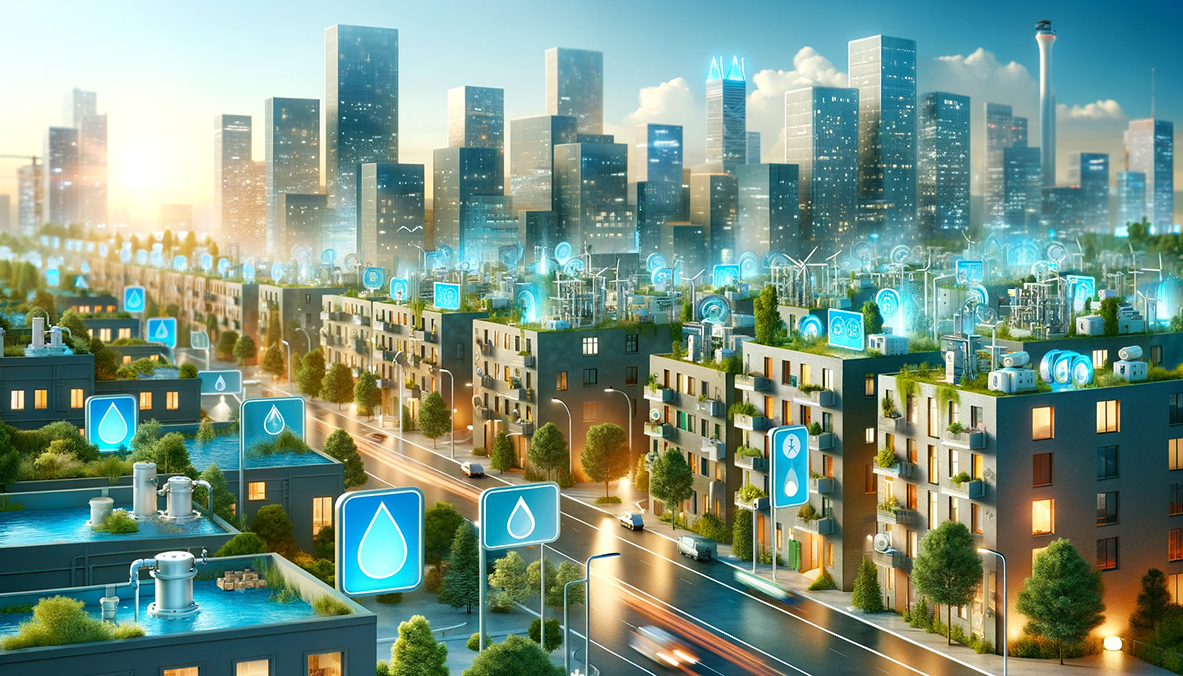Embracing Efficiency: The Rise of Submetering Systems in Water Conservation and Cost Management
In an age when sustainability and efficiency are more than just buzzwords, the role of submetering systems, especially in water usage, has become increasingly crucial. As businesses and municipalities grapple with the challenges of environmental conservation and economic efficiency, the need for precise resource management tools has never been more pronounced. Submetering systems, which offer detailed measurement of utilities such as water, electricity, and gas, are at the forefront of this transformation.
Water resources are under increasing pressure from urbanization, climate change and growing populations. The traditional approach to water billing, where costs are often divided evenly among residents of a building, does not account for the actual usage by individual units. This lack of transparency and accountability has long been a source of inefficiency and unfairness. Enter water submetering – a game-changer in the utility management landscape.
The Critical Role of Water Submetering in Modern Utility Management
Water submetering systems provide granular insights into water usage at an individual unit level within residential and commercial properties. This capability is not just about measuring consumption; it represents a fundamental shift in how we value and manage water. By enabling precise tracking of water usage, these systems encourage responsible consumption behaviors, leading to significant reductions in waste. This aspect is particularly critical in regions facing water scarcity, where every drop saved contributes to the broader goal of sustainability.
Technological Evolution of Submetering Systems
The technological evolution of submetering systems is a story of innovation and adaptation. Initially conceptualized to provide in-depth utility consumption data, these systems have transformed dramatically, propelled by rapid advancements in technology. The adoption of wireless communication systems has revolutionized the ease of installing and maintaining submetering systems. Modern submetering also offers real-time data access, a critical feature in today’s fast-paced world. This immediacy of information allows property managers and residents to monitor their utility usage as it happens, leading to more informed decision-making.
Water Conservation through Submetering
Submetering systems play a crucial role in water conservation. By providing detailed consumption data to users, these systems enable a granular level of insight into water usage. This heightened awareness encourages more responsible and mindful consumption behaviors. For instance, when individuals are aware of their water consumption patterns, they are more likely to adopt water-saving practices like fixing leaks promptly or using water-efficient appliances. The impact of these changes is particularly significant in regions facing water scarcity. Here, every effort to conserve water directly contributes to the broader goal of sustainability. Furthermore, detailed consumption data can lead to the adoption of more sustainable practices, not just at the individual level but also across communities. This collective action towards conservation can significantly reduce the overall demand for water, aiding in the long-term sustainability of water resources.
Cost Savings and Equity in Billing
Another significant benefit of submetering is its ability to ensure fair and accurate billing. By billing users based on their actual consumption, submetering systems promote equity in utility costs. This equitable approach is particularly important in multi-unit dwellings or commercial buildings, where water usage can vary significantly between different units or tenants. Accurate billing based on actual usage not only ensures fairness but also incentivizes reduced usage, leading to cost savings. For property owners, this translates into an efficient allocation of costs and potentially lower overall operational expenses. Furthermore, when tenants or users are responsible for their water consumption, it typically leads to more conscientious usage, directly impacting water conservation efforts.
Enhancing the Benefits with Technological Integration
The integration of advanced technologies in submetering systems can further enhance these benefits. For example, real-time monitoring and leak detection features can quickly identify excessive or abnormal water use, allowing for immediate corrective actions. This capability is essential for preventing wastage due to leaks or other issues, thereby contributing to both conservation efforts and cost savings. Additionally, the use of data analytics in submetering systems can provide deeper insights into usage patterns, enabling the development of more targeted conservation strategies and efficient billing practices.
Conclusion
In conclusion, submetering systems are more than just technological tools; they represent a significant shift towards more sustainable and responsible utility management. By enabling precise tracking, equitable billing, and encouraging conservation, submetering plays a critical role in efficiently managing water, a precious and increasingly more valuable natural resource. Adopting these systems aligns with modern goals of environmental sustainability and economic efficiency, marking a key step in our journey towards a more responsible approach to resource management.
